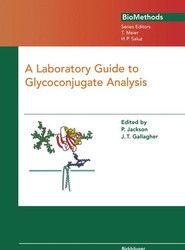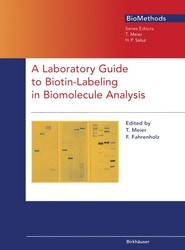(To see other currencies, click on price)
MORE ABOUT THIS BOOK
Main description:
Biological processes in any living organism are based on selective interactions be tween particular biomolecules. In most cases, these interactions involve and are driven by proteins, which are the main conductors of any life process within the organism. The physical nature of these interactions is still not well known. This book presents an entirely new approach to analysis of biomolecular in teractions, in particular protein-protein and protein-DNA interactions, based on the assumption that these interactions are electromagnetic in nature. This new ap proach is the basis of the Resonant Recognition Model (RRM), which was devel oped over the last 15 years. Certain periodicities within the distribution of energies of delocalised electrons along a protein molecule are crucial to the protein's biological function, i.e. inter action with its target. If protein conductivity were introduced, then charges mov ing through the protein backbone might produce electromagnetic irradiation or ab sorption with spectral characteristics corresponding to energy distribution along the protein. The RRM is capable of calculating these spectral characteristics, which we hypothesized would be in the range of the infrared and visible light. These characteristics were confirmed with frequency characteristics obtained ex perimentally for certain light-induced biological processes.
Contents:
1 Introduction.- 1.1 Structure-function relationships in proteins and DNA: definition of the problem.- 1.2 Existing approaches and their limitations.- Primary, secondary and tertiary structure analysis.- Three-dimensional protein structure: importance of function.- Three-dimensional protein structure: predictions.- 1.3 Novelty of the RRM model.- 1.4 Applications of the RRM.- 2 RRM Basic Concepts.- 2.1 Definition of macromolecular functional characteristics: characteristic frequency.- 2.2 Problems in FFT calculations within the RRM.- 3 The Physical Meaning of the RRM.- 3.1 Charge transfer through the protein backbone.- 3.2 Correlation of the RRM characteristic frequency with absorption spectra of light-absorbing proteins.- 3.3 Correlation of RRM characteristic frequency with low-intensity light effects on cell proliferation.- 3.4 Correlation between predicted and measured characteristic frequency of chymotrypsin activation.- 3.5 Photoreceptors with similar structures but different absorptions can be distinguished using the RRM.- 3.6 Frequency range of macromolecular interactions.- 4 Relation Between the RRM and 3D Protein Structures.- 4.1 Definition of "hot spots" in terms of the RRM.- 4.2 Example of heme-containing proteins.- Myoglobins and hemoglobins.- Cytochrome C.- Lysozymes.- 4.3 Discussion.- 5 Prediction of Functionally Active Sites and Functional Mutations.- 5.1 Hot spot predictions in DNA: example of the SV40 enhancer.- 5.2 Hot spot predictions in proteins: example of IL-2.- 5.3 Hot spot predictions in EGF.- 5.4 Active site prediction: example of protease-protease inhibitor interactions.- 5.5 Oncogenes and their activity: example of ras proteins.- 5.6 Definition of sequence function.- Definition of DNA segment function.- Definition of protein or protein segment function.- 6 Protein Interactions.- 6.1 Protein-protein interactions: frequency requirements.- Interaction of protease-protease inhibitors.- Interaction of IGF-IGF binding proteins.- 6.2 Protein-protein interactions: phase requirements.- Interaction of NGF-NGF receptors.- Interaction of IL-2-IL-2 receptors.- Interaction of immunoglobulin VHIII and protein A.- 6.3 Protein-DNA interactions.- Protein-DNA interactions: structural requirements.- Protein-DNA interactions: frequency requirements.- New possibilities: ras-DNA interaction.- 7 Bioactive Peptide Design.- 7.1 Procedures: example of design of glucagon analogues.- 7.2 NGF analogue design and possible applications.- 7.3 Design of FGF analogues and application in limiting solid tumour growth.- 7.4 HIV-related peptides that mimic HIV immunogenicity.- 7.5 Activity of HIV-1-inhibiting peptides.- 7.6 New concept of HIV activity.- 8 Conclusions.- 8.1 New concept in molecular biology, new point of view.- 8.2 Advances in theory: macromolecular physics.- 8.3 Advances in molecular biology; design of new pharmaceuticals.- References.
PRODUCT DETAILS
Publisher: Springer (Birkhauser Verlag AG)
Publication date: November, 2012
Pages: None
Weight: 289g
Availability: Available
Subcategories: General Issues
From the same series





